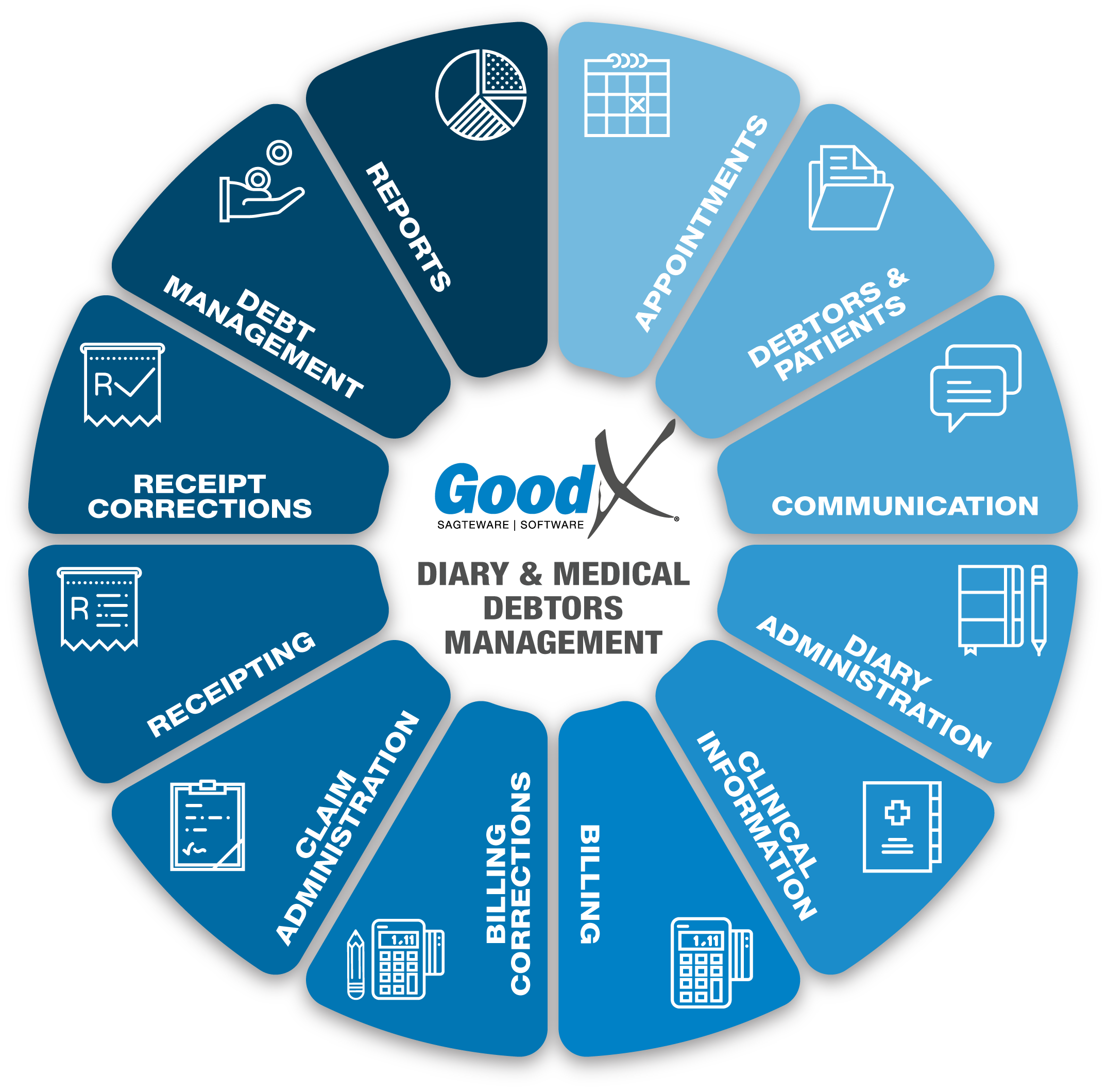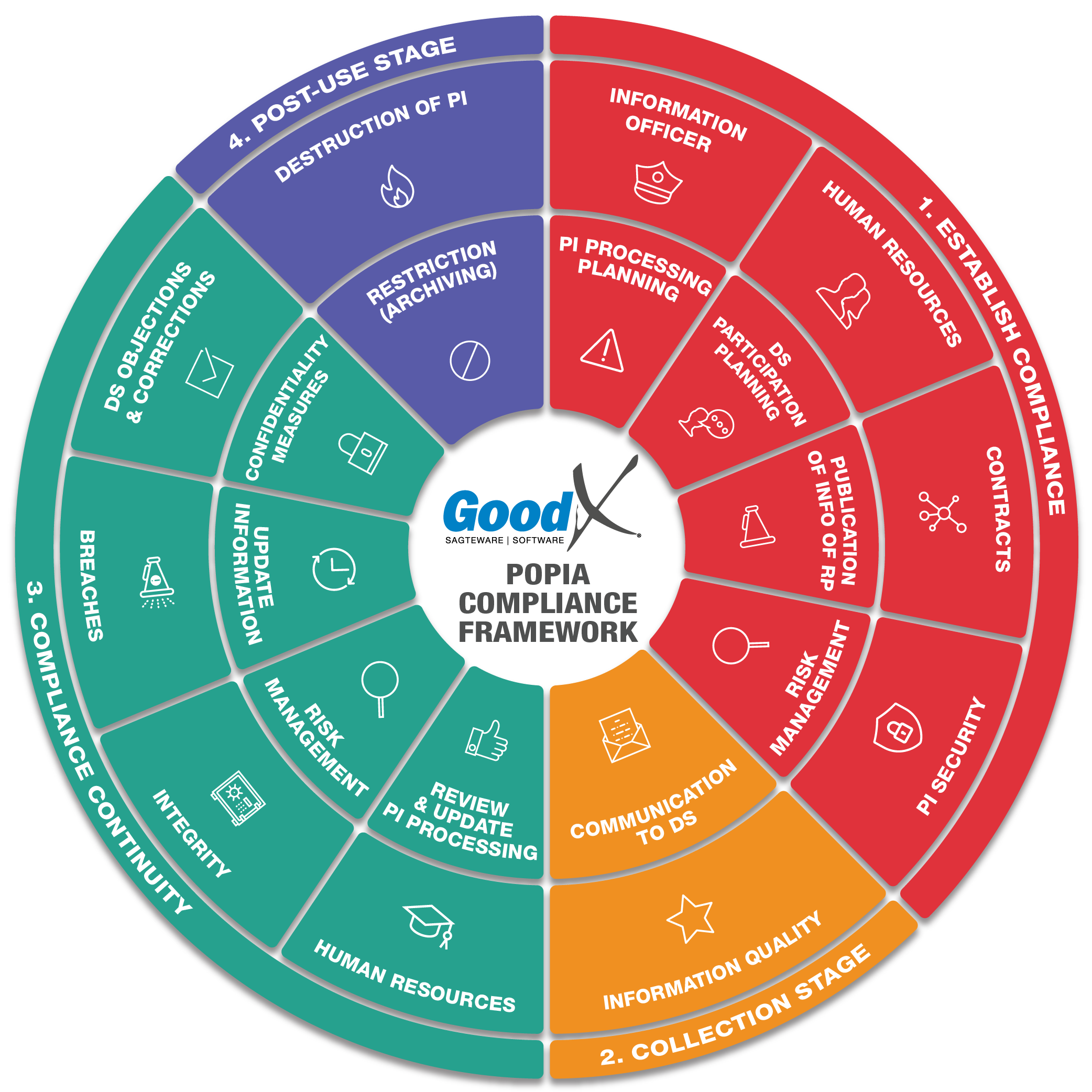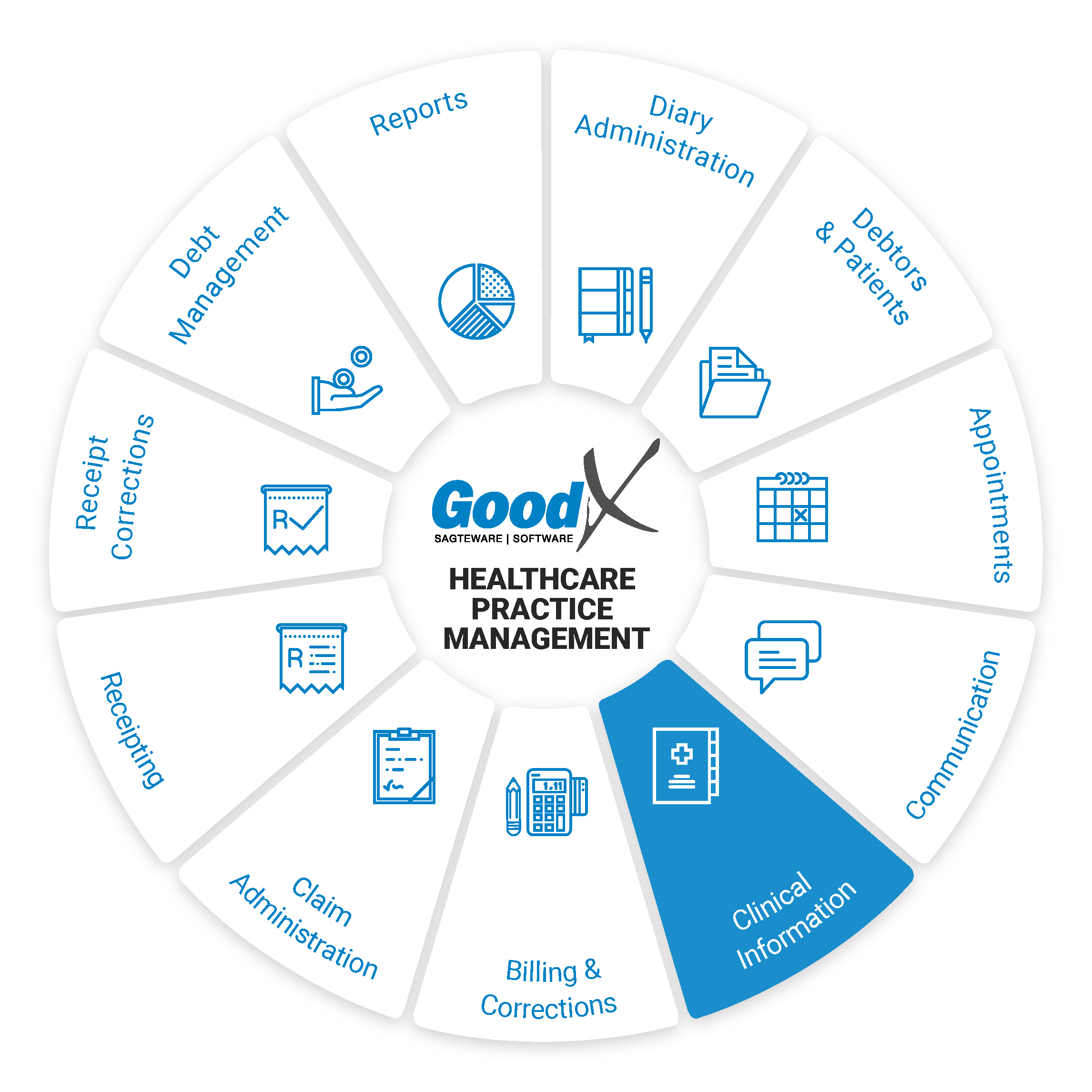Best Practice Guidelines: Healthcare Practice Management & POPIA Compliance Framework
Best Practice Guidelines: Healthcare Practice Management
&
POPIA Compliance Framework


Copyright © 2021 GoodX Software. All rights reserved.
GoodX online Learning Centre
learning.goodx.co.za
8. Clinical Information: Roles & Purpose
Responsible Role
 |
Operational Role:
|
|
Collection stage:
Compliance continuity stage:
|
|---|
 Purpose of Clinical
Information
Purpose of Clinical
Information
- Capturing clinical information will assist the practitioner in diagnosing the patient and ensure that an accurate history of each patient and the patient event is kept.
- When a patient requires further medical attention, medical records will assist the practitioner in making the correct diagnosis and applying the proper treatment.
- Updated Clinical information can be sent to other practitioners, for example, Specialists, to assist in further treatment.
- During legal proceedings between the patient and practitioner, clinical records can be helpful.
- We always say it never happened if it is not written down.
- All Clinical Forms will be saved under the patient Clinical History and can be viewed, printed or edited at any time.